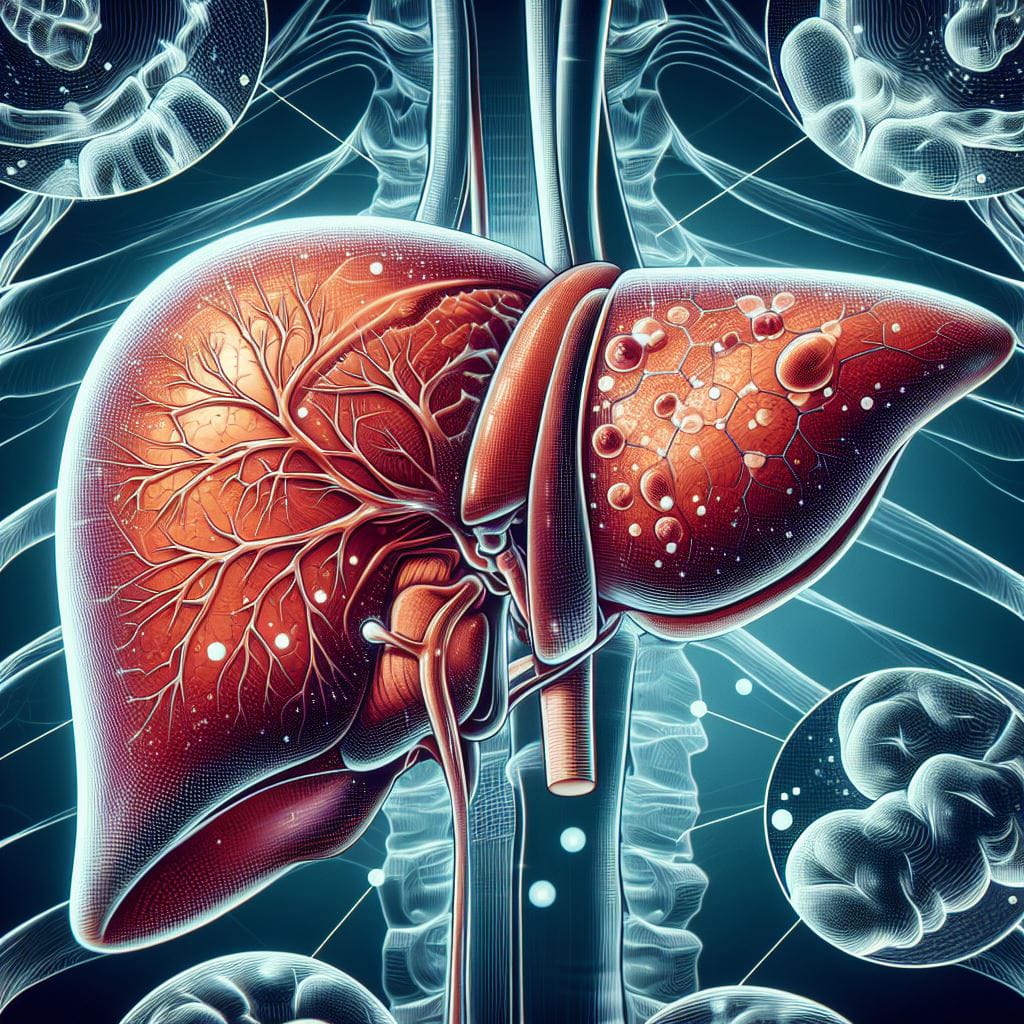Non-invasive tests for non-alcoholic fatty liver disease (NAFLD) is a growing concern globally, affecting millions of individuals worldwide. As the name suggests, NAFLD is characterized by the accumulation of fat in the liver, unrelated to excessive alcohol consumption. Early detection and management of NAFLD are crucial in preventing its progression to more severe conditions like non-alcoholic steatohepatitis (NASH) and cirrhosis.
Fortunately, advancements in medical technology have led to the development of non-invasive tests for diagnosing and monitoring NAFLD, reducing the need for invasive procedures such as liver biopsies. Here, we’ll discuss all about NAFLD and non-invasive tests for NAFLD in detail, so keep reading.
What Is Non-Alcoholic Fatty Liver Diseases?
Non-alcoholic fatty liver disease (NAFLD) is a condition where excess fat builds up in the liver cells of people who don’t drink alcohol excessively. It’s becoming increasingly common worldwide, often linked to unhealthy lifestyles such as poor diet and lack of exercise. NAFLD is often considered a silent disease because it may not cause any noticeable symptoms in the early stages.
The main risk factors for NAFLD include obesity, type 2 diabetes, high cholesterol, and high blood pressure. When too much fat accumulates in the liver, it can lead to inflammation and liver damage. In some cases, NAFLD can progress to more serious liver conditions such as non-alcoholic steatohepatitis (NASH), which involves liver inflammation and may lead to scarring, cirrhosis, and even liver failure.
Preventing NAFLD involves adopting a healthy lifestyle, including a balanced diet low in saturated fats and sugars, regular exercise, maintaining a healthy weight, and avoiding excessive alcohol consumption. Early detection through regular check-ups is crucial, as lifestyle changes can help manage the condition and prevent it from progressing to more severe liver problems. If you’re concerned about NAFLD, it’s important to consult with a healthcare professional for proper diagnosis and guidance on managing your liver health.
Importance Of Early Detection Of Non-Alcoholic Fatty Liver Diseases
Early detection of non-alcoholic fatty liver disease (NAFLD) is crucial for several reasons. Firstly, NAFLD often progresses silently without causing noticeable symptoms in its early stages. Detecting it early through routine medical check-ups allows for timely intervention and management to prevent further liver damage.
Secondly, identifying NAFLD early provides an opportunity for lifestyle modifications and interventions that can halt or even reverse the progression of the disease. Lifestyle changes such as adopting a healthy diet, increasing physical activity, and managing conditions like obesity and diabetes can significantly improve liver health and reduce the risk of complications.
Additionally, early detection of NAFLD enables healthcare providers to monitor the condition closely and intervene promptly if it progresses to more severe stages, such as non-alcoholic steatohepatitis (NASH) or liver fibrosis. Timely intervention can help prevent irreversible liver damage, such as cirrhosis or liver failure, and improve long-term outcomes for patients.
Overall, early detection of NAFLD empowers individuals to take control of their liver health, make informed decisions about their lifestyle, and access appropriate medical care to prevent the progression of the disease and its associated complications. Regular health screenings and proactive discussions with healthcare providers play a vital role in identifying NAFLD early and implementing effective management strategies.
Common Non-Invasive Tests Non-Alcoholic Fatty Liver Diseases

Several non-invasive tests are available for diagnosing and monitoring NAFLD, each offering unique advantages and limitations.
Ultrasonography
Ultrasonography, or ultrasound, is a commonly used imaging technique that uses sound waves to create images of the liver. It is non-invasive, painless, and readily accessible in most healthcare settings. Ultrasonography can detect the presence of fatty liver and assess liver texture, aiding in the diagnosis and staging of NAFLD.
FibroScan
FibroScan, also known as transient elastography, measures liver stiffness to assess fibrosis levels. This technique involves using a specialized ultrasound probe to generate shear waves and evaluate liver stiffness non-invasively. FibroScan provides valuable information about liver fibrosis, helping healthcare providers determine the severity of NAFLD and guide treatment decisions.
Magnetic Resonance Imaging (MRI)
MRI is a non-invasive imaging modality that offers detailed visualization of liver anatomy and pathology. It can detect liver fat content, assess inflammation and fibrosis, and differentiate between various liver conditions. MRI techniques such as magnetic resonance elastography (MRE) provide quantitative measurements of liver stiffness, aiding in the diagnosis and monitoring of NAFLD.
Liver Function Tests (LFTs)
These measure levels of enzymes and proteins in the blood that indicate liver health. Elevated levels of enzymes such as alanine aminotransferase (ALT) and aspartate aminotransferase (AST) may suggest liver inflammation or damage, which can be indicative of NAFLD.
Controlled Attenuation Parameter (CAP)
CAP is a component of FibroScan that measures the degree of liver steatosis, or fat accumulation, by assessing the liver’s ultrasound attenuation. CAP values provide information about the severity of hepatic steatosis and can help guide treatment decisions.
Are Non-Invasive Tests For NAFLD Suitable For Everyone?
While non-invasive tests for non-alcoholic fatty liver disease (NAFLD) offer several advantages, they may not be suitable for everyone or in all situations. Several factors can influence the appropriateness and effectiveness of non-invasive tests for NAFLD:
1. Disease Stage: Non-invasive tests may be less accurate in detecting early stages of NAFLD or differentiating between NAFLD and other liver conditions. In advanced stages of NAFLD with significant fibrosis or cirrhosis, these tests may provide more reliable results.
2. Patient Characteristics: Certain patient factors, such as obesity or ascites (fluid buildup in the abdomen), can affect the accuracy of non-invasive tests. Additionally, individuals with specific medical conditions or implanted medical devices may have limitations in undergoing certain imaging techniques.
3. Cost and Availability: Advanced non-invasive tests, such as magnetic resonance elastography (MRE), may not be widely available in all healthcare settings and can be costly. Accessibility and affordability can impact the feasibility of using these tests for NAFLD evaluation.
4. Comorbidities: Patients with multiple comorbidities, such as diabetes or chronic kidney disease, may require careful consideration when interpreting results from non-invasive tests, as these conditions can influence liver function and test accuracy.
5. Clinical Judgment: Non-invasive tests should be interpreted in the context of clinical findings and other diagnostic information. In some cases, healthcare providers may recommend complementary tests or procedures, such as liver biopsy, to confirm the diagnosis or assess disease severity more accurately.
Overall, while non-invasive tests for NAFLD play a valuable role in screening, diagnosis, and monitoring, healthcare providers should consider individual patient factors and clinical circumstances to determine the most appropriate diagnostic approach. Collaborative decision-making between healthcare providers and patients is essential to ensure optimal management and outcomes for individuals with NAFLD.
Read: Why Everyone Must Have Knowledge About OTC Drugs?: Does It Help Self-Medication?
Advantages of Non-Invasive Tests For Non-Alcoholic Fatty Liver

Non-invasive tests for liver evaluation offer several advantages over invasive procedures such as liver biopsy. Some of the key benefits include:
-
- Safety: Non-invasive tests do not involve surgical incisions or tissue sampling, reducing the risk of complications such as bleeding, infection, or organ injury associated with invasive procedures like liver biopsy.
-
- Minimal Discomfort: Non-invasive tests, such as blood tests or imaging studies, are generally well-tolerated and cause minimal discomfort compared to invasive procedures, making them more acceptable to patients.
-
- Accessibility: Non-invasive tests are usually readily available and can be performed in outpatient settings, requiring less time and resources compared to invasive procedures that may necessitate hospitalization and specialized equipment.
-
- Convenience: Non-invasive tests typically require less preparation and recovery time, allowing patients to resume their daily activities immediately after the procedure without significant disruption to their routine.
-
- Repeatable: Non-invasive tests can be performed repeatedly over time to monitor disease progression or treatment response without posing additional risks to the patient, providing valuable longitudinal data for managing chronic liver conditions like non-alcoholic fatty liver disease (NAFLD).
-
- Comprehensive Assessment: Advanced non-invasive techniques, such as FibroScan and magnetic resonance elastography (MRE), can provide detailed information about liver health, including liver stiffness, fat accumulation, and fibrosis, offering a comprehensive assessment without the need for invasive interventions.
Overall, non-invasive tests for liver evaluation offer a safe, convenient, and reliable alternative to invasive procedures, allowing for accurate diagnosis, monitoring, and management of liver diseases while prioritizing patient comfort and safety.
Limitations and Challenges Of Non-Invasive Liver Tests
Despite their benefits, non-invasive tests for NAFLD have certain limitations and challenges that need to be addressed:
-
- Accuracy Concerns: Some non-invasive tests may have lower accuracy compared to liver biopsy, particularly in distinguishing between different stages of liver fibrosis.
-
- Variability in Results: Results from non-invasive tests may vary depending on factors such as patient characteristics, equipment used, and operator expertise.
-
- Availability in Different Healthcare Settings: Access to non-invasive tests may be limited in certain regions or healthcare settings, posing challenges for patients seeking diagnosis and management of NAFLD.
Emerging Technologies and Future Prospects
Researchers are continually exploring novel technologies and biomarkers for diagnosing and monitoring NAFLD. Emerging techniques such as magnetic resonance spectroscopy (MRS), serum biomarkers, and artificial intelligence (AI) algorithms show promise in improving the accuracy and accessibility of non-invasive testing methods. Future developments in this field are expected to enhance early detection and personalized management of NAFLD, ultimately reducing the burden of liver disease worldwide.
Read: Vitamin D Deficiency And Iron Deficiency Anemia In Children
Conclusion
Non-invasive tests for NAFLD represent a significant advancement in the field of hepatology, offering safe, effective, and accessible alternatives to liver biopsy. These tests play a crucial role in early detection, staging, and monitoring of NAFLD, enabling healthcare providers to implement timely interventions and improve patient outcomes. Despite their limitations, non-invasive tests continue to evolve, driven by technological advancements and research innovations. With further refinement and validation, these tests hold the potential to revolutionize the diagnosis and management of NAFLD, ultimately reducing the global burden of liver disease.
